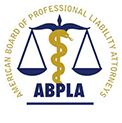
San Francisco Anesthesia Error Attorney
Call if You Were Injured by an Anesthesia Mistake in California: (888) 831-8448
Anesthesia is a valuable tool for medical professionals, but it has considerable risks which must be appropriately managed. If anesthesiologists, physicians, or other health care providers make mistakes when administering anesthesia, the consequences can be devastating.
If you or a loved one were harmed due to an anesthesia error, you may have been a victim of negligence. By filing a medical malpractice claim, you can seek financial compensation for your damages.
Bostwick & Associates is a U.S. News “Best Law Firms Tier 1 law firm that has won record results for medical negligence victims. Our San Francisco lawyers can review your anesthesia error lawsuit and discuss your options.
Why Choose Bostwick & Associates?
Bostwick & Associates is trusted by colleagues and clients nationwide. Here are a few reasons why:
- Over $1 billion in compensation recovered for clients, including numerous million and multi-million results in medical negligence cases.
- Record-setting verdicts and settlements in four states, including the largest medical malpractice recovery in California history ($17M settlement for a brain-injured baby).
- Nationally renowned trial lawyers included in The Best Lawyers in America, Super Lawyers, Inner Circle of Advocates, and more.
- Specialized experienced from a Medical Malpractice Specialist certified by the American Board of Professional Liability Attorneys (James S. Bostwick).
What is Anesthesia?
Anesthesia is a medical practice used to induce a reversible loss of sensation or consciousness in a patient to facilitate medical procedures, such as surgery, invasive diagnostic procedures, or painful treatments. It ensures that patients do not feel pain or discomfort during these procedures while also allowing surgeons and medical professionals to perform their work effectively.
Common types of anesthesia include:
- General Anesthesia: This type induces a state of unconsciousness and loss of sensation throughout the entire body. It is typically administered through inhalation (breathing in gases) or intravenously (injection into a vein). Patients under general anesthesia are completely unconscious and unaware of their surroundings.
- Regional Anesthesia: Unlike general anesthesia, regional anesthesia blocks sensation to a specific part of the body while the patient remains conscious. There are several types of regional anesthesia, including:
- Spinal Anesthesia: An anesthetic agent is injected into the spinal canal to numb the lower half of the body. It's commonly used for lower abdominal, pelvic, and lower extremity surgeries.
- Epidural Anesthesia: Similar to spinal anesthesia, but the anesthetic agent is injected into the epidural space surrounding the spinal cord rather than directly into the spinal canal. It's often used during childbirth and for pain relief during labor, as well as for surgeries involving the lower body.
- Nerve Blocks: Local anesthetic is injected near a cluster of nerves, blocking sensation to a specific part of the body supplied by those nerves. Nerve blocks can be used for various procedures, including surgeries on limbs and for pain management.
- Local Anesthesia: This type numbs a small, specific area of the body where the procedure is being performed. It is commonly administered through injections or topical applications. Local anesthesia is often used for minor procedures, such as dental work, skin biopsies, or suturing small wounds.
Types of Anesthesia Errors
Anesthesia is used widely across many medical settings – from hospitals and emergency departments to outpatient facilities and doctor’s offices. Wherever anesthesia is administered, treating providers – including anesthesiologists and certified nurse anesthetists (CRNA) – are obligated to meet the accepted standards of their profession.
Unfortunately, specialists and medical professionals can make devastating mistakes. Some examples of anesthesia malpractice:
- Improper dose: Errors involving the amount of anesthesia given to a patient can cause severe injury or death. This includes too much or not enough anesthesia, or the wrong type.
- Failure to treat complications: Providers should be prepared to promptly react in the event of complications or adverse reactions, and may be held liable for injuries caused by failures to diagnose or recognize complications and delays or failures to treat.
- Failure to monitor: Patients under anesthesia should be appropriately monitored for signs of distress and oxygen deprivation. Failure to adequately monitor may result in liability.
- Coordinated care errors: Anesthesia administration commonly requires coordination between multiple specialists, providers, and administrators. Communication errors and mistakes involving patient intake, hand-off, or informed consent can have major consequences.
- Defective products: Companies responsible for defectively designed or manufactured anesthesia machines can be held liable for preventable injuries under product liability.
Errors involving anesthesia can increase risks of serious and fatal injuries involving:
- Intubation errors and airway trauma
- Oxygen deprivation and brain damage
- Blood clots and heart attack
- Stroke injuries
- Anaphylaxis (allergic reaction)
- Paralysis and nerve damage
- Coma or wrongful death
- Regaining consciousness during procedure (anesthesia awareness)
These injuries can result from the negligent acts of administering too much or too little anesthesia, reducing anesthesia before completion of the surgery, neglecting to give patient enough oxygen, or by administering an anesthetic to which the patient is allergic. A talented lawyer from our team can help address the legal issues surrounding the errors that may have occurred in your case.

NATIONALLY RECOGNIZED LAW FIRM
-
 Inner Circle of Advocates
Inner Circle of AdvocatesInvitation-only organization of the top 100 plaintiff trial lawyers in the U.S.
-
 International Academy of Trial Lawyers
International Academy of Trial LawyersFormer President of the International Academy of Trial Lawyers, limited to the top 500 trial lawyers in the U.S.
-
 American Board of Trial Advocates
American Board of Trial AdvocatesInvitation-only group of the nation’s top civil lawyers and judges.
-
 Super Lawyers 2024
Super Lawyers 2024James S. Bostwick has been named top-rated medical malpractice attorneys in Northern California.
-
 The Best Lawyers in America
The Best Lawyers in AmericaRecognized since its inception in 1983 by this peer-reviewed publication, comprised of the best legal talent in the world. Awarded Best Malpractice Lawyer in 2012 and 2013.
-
 Lawdragon
LawdragonJames Bostwick inducted into the Hall of Fame and featured among the Top 500 Leading Plaintiff Consumer Lawyers in America.
-
 American Board of Professional Liability Attorneys
American Board of Professional Liability AttorneysJames Bostwick is a nationally certified medical malpractice specialist and founding member.
-
 Best Law Firms 2024
Best Law Firms 2024Recognized for professional excellence with impressive ratings from clients and peers.

What Sets Bostwick & Associates Apart?
-
Since January 2018, the firm has twice broken the California record for the largest medical malpractice settlement
-
More than $1 billion recovered for our clients
-
James Bostwick was named Trial Lawyer of the Year by Best Lawyers® in 2012
-
Record-setting verdicts and settlements in five states for medical malpractice and motor vehicle accidents
-
James Bostwick is a member of the Inner Circle of Advocates, limited to the nation’s top 100 plaintiff lawyers
-
James Bostwick received the Trial Lawyers "Presidential Award of Merit"
-
Included in the list of "Best Lawyers in America" by U.S. News - Best Lawyers® since its inception in 1983
-
James Bostwick is a Nationally Certified Specialist by the American Board of Professional Liability






.2507150747482.png)



